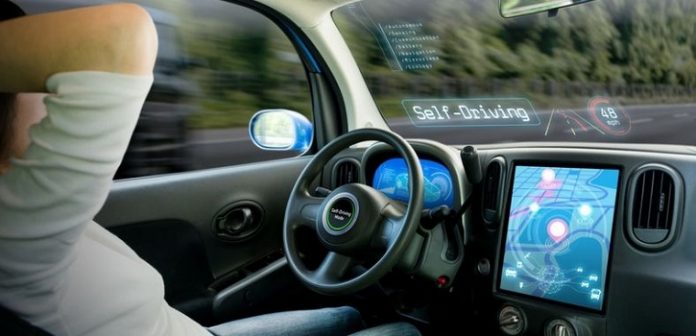Since time immemorial, humans have always tried to find an easier way of doing things. In the 19th century, there was a need for larger machines because of the increased demand for many products. People invented farming tools to increase food production. There is no limit to what humanity can do.
Today, the use of artificial intelligence (AI) has enabled scientists to develop machines that could replace humans in many jobs. AI could power lives, cars, and homes. And, thanks, to AI, self-driving cars are now a reality.
However, The Three Laws of Robotics stand in the way of this innovation being adopted by the mainstream.
Current challenges
No matter how many times a person repeats an activity, he or she will rarely do it perfectly. People must go to driving schools and pass tests before they can drive a car on the road. In most cases, many people only drive within a given region and will rarely drive to unfamiliar places. On almost all roads, there are signs that remind both drivers and pedestrians of the rules.
Despite the experience of many drivers, cars continue to end the lives of millions of people worldwide annually. Many more are injured. Poor roads, car failures, and bad weather are among the causes of these accidents. However, research has shown humans cause almost 90 percent of these accidents. Despite the efforts of authorities around the world to make the roads safer, people are still dying.
Benefits of technology
While humans are not perfect, they can make products that are more productive and more accurate. They have made computers that can do mathematical concepts not only within a short time but also with high accuracy. For instance, it can take a person hours to complete a task, such as adding up line items in Excel. A computer can do the same procedure in a shorter amount of time with more accuracy.
Several companies have taken the lead in the use of artificial intelligence in automobiles. These companies include Audi, Nissan, Tesla, and Google. Audi, for instance, has already collaborated with Nvidia to develop the Audi Q7, which uses driverless technology. Self-driving cars may not be common today. But, according to Audi’s CEO, Rupert Stadler, every aspect of human life will use AI in the future. And, that will make self-driving cars more accepted by the public.
How a self-driving car works
A few decades ago, nobody thought technology could replace humans in so many areas, driving included. A self-driving car does not need a human to drive. The car has the latest technological tools to sense its surroundings and navigate autonomously. The cars would include an inertial navigation system, GPS unit, and several sensors, such as video, radar, and laser rangefinders.
A driverless car uses software to process the data it collects. Then, it plots a path before instructing the car’s “actuators.” These oversee steering, braking, and acceleration. The software can easily navigate obstacles and follow traffic rules using “smart” object discrimination, predictive modeling, obstacle avoidance algorithms, and hard-coded rules.
The Three Laws of Robotics

Science fiction author Isaac Asimov was among the first to try to introduce ethical guidelines when using human-like robots. Asimov developed The Three Laws of Robotics with the aim of protecting humanity from robots.
The first law states a robot should not injure a person or let a person come to harm through its inaction.
The second law states a robot must obey any order given by a human unless it conflicts with the first law.
The third law states a robot must protect itself as long as this does not go against the first two laws.
For a long time, scientists have used Asimov’s laws as guidelines for developing robots. So important are the laws, that, in South Korea, the government included these laws in the Robot Ethics Charter.
The scientists, however, view these laws differently. Most blame the laws for discouraging the adoption of promising technologies, such as AI that could improve a person’s well-being. Most scientists have called for the introduction of the 21st-century version of these rules.
The ethical dilemma of self-driving cars

Most proponents of self-driving cars believe they will become commonplace in less than a decade. The hypothetical argument is these cars will lead to a drastic reduction in road accidents. This will save lives and save others from injuries that sometimes can incapacitate them. However, many people continue to raise moral and ethical issues about technology.
The biggest question is whether the clear rules-based code of a computer used in driverless cars can address ethical dilemmas. Generally, ethics is not just about a figure. A manufacturer cannot say a car is ethical simply because it doesn’t kill as many people as human drivers might.
The “trolley problem” is one of the greatest demonstrations that AI may not compare with humans in terms of ethics.
The first case concerns a train finding five people lying on one track and one person lying on another. Because people are moral creatures, 90 percent would send the train down the track that has the one person. By doing so, they believe they are saving more lives.
The second case is about a runaway trolley that is about to kill five people. However, people can save them if they use something heavy to stop the trolley. Most people strongly oppose the idea of throwing a large man on the track to save the others.
These two examples demonstrate just how complex the issue of morality is.
The “tunnel problem” further shows how hard it is to program a machine to follow moral and ethical guidelines. In this case, a speeding driver finds a child lying at the entrance to a tunnel. The driver must decide whether to hit the child or the wall since he or she cannot stop the car. About 64 percent of the respondents indicated they would hit the child while 36 percent would hit the wall.
Is it possible to have a driverless car that has a sense of morality? One survey looked at who should decide what action an automatic car should take in such cases. Most of the respondents (44 percent) said it should be the passenger. Another 33 percent said the lawyers. Only 12 percent said it should be manufacturer/designer. Another 11 percent said others should be responsible.
The way forward
It has been 76 years since Asimov wrote The Three Laws of Robotics. Many scientists believe it is time to rewrite them. As Stadler notes, despite the many potential benefits of AI, public trust in the technology is necessary. It is unfortunate that despite humans being imperfect, they are very unforgiving to technology. They always want it to do things in the “right” way.
It is important to consider the economic impact of AI before allowing it to do anything. It’s also important to note that legalizing and adopting self-driving cars will lead to millions of people losing their jobs. Robots cannot buy robots. Therefore, the need to create new employment opportunities will increase as the use of AI increases.
According to some scientists, it is only a matter of time before industries adopt artificial intelligence. Furthermore, technology has always rendered some people jobless while, at the same time, it has created new opportunities. Automobile companies are busy working on self-driving cars because they believe they are the future of the industry.
Disclaimer: All images are copyright to their respective owners and are used by USA Online Casino for informational purposes only.










